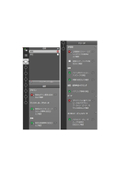Introduction to Press Forming Simulation [AutoForm Pareto Principle]
Promoting a change in industry awareness towards achieving improved accuracy in press forming simulation through the AutoForm Pareto Principle!
Introduction to the Pareto Principle introduced in press forming simulation. By understanding this principle, you can efficiently enhance the accuracy of press forming simulations. 【Contents】 1. About the Pareto Principle in forming simulation 2. Reasons to focus on setting "essential parameters" in process simulation 3. The next level of "critical parameters" for more accurate simulation considerations 4. The third group of "important parameters" handled by the AutoForm Pareto Principle model 5. Strengthening press forming simulation through the addition of robustness analysis, which is responsible for the comprehensive expansion of the accuracy index with the final level of "detailed parameters" 6. The last parameters in the accuracy indicators of simulation: tribology and contact surface pressure
basic information
For more details, please refer to the "Catalog Download."
Price range
Delivery Time
Applications/Examples of results
Main industries of introduction: ● Automotive OEM industry ● Mold press product manufacturing ● Automotive parts manufacturing
catalog(10)
Download All Catalogs

[Case Study] AutoForm Customer Success Stories 2022
News about this product(3)
-

[Published in Mold News] Simulation Software "Breakthrough!"
The online news for mold manufacturing has published an article about our simulation software, 【Breakthrough!】. ● "Digitizing Molding to Assembly" - Press - A universal user need in mold manufacturing is the reduction of lead times. Recently, the time spent on mold production has decreased, including the shortening of development periods, and reducing labor costs has become a significant challenge. The entire process chain from initial concept creation to mold factories and assembly plants is covered, allowing for a comprehensive examination of press molding and BiW assembly in a digital space. The "AutoForm Digital Process Twin" has been introduced. Please take a look.
-

Information is being distributed on official SNS (LinkedIn, Facebook, LINE)!
AufoForm Japan disseminates digital planning and digital information for the entire process chain dealing with press-formed parts on various social media platforms including LinkedIn, Facebook, and LINE. ■ Successful cases applying planning and simulation software ■ Software development and related information from various companies ■ Cutting-edge technologies and trends ■ Industry-wide trends, etc. LinkedIn: https://www.linkedin.com/company/71626816/admin/ Facebook: https://www.facebook.com/autoform.jp/ LINE: @afjp
-

[Magazine Contribution] Published in the March issue of "TECHNICAL REPORT" on mold technology.
An article contributed by our company has been published in the March issue of the Nikkan Kogyo Shimbun's "Kata Gijutsu." Please take a look. 【TECHNICAL REPORT 4】 Press forming simulation technology utilized in the Digital Manufacturing School 【Abstract】 The "Digital Manufacturing School," jointly organized by the Hiroshima Economic Federation's Manufacturing Committee and the Hiroshima Industrial Promotion Organization's Hiroshima Digital Innovation Center, aims to enhance the technological capabilities of local small and medium-sized enterprises. Currently, two courses are offered: one for press forming molds and another for injection molding molds, where participants engage in practical exercises to solve their company's challenges through the use of digital tools. The digital tools employed include AutoForm (for the press forming mold course) and 3D-TIMON (for the injection molding mold course), which are easy to operate even for those who are not dedicated CAE specialists. The focus is not only on learning how to use the software but also on developing problem-solving skills. This article introduces three points from the initiatives reported in the press mold course. - Improvement of the correlation between CAE analysis and actual machines - Analysis of sudden cracking factors during mass production - Systematic consideration of springback countermeasures for product shapes
Recommended products
Distributors
AutoForm Group is a company established in Zurich, Switzerland in 1995, with branches in 16 countries, providing services to over 1,000 companies in the automotive, aerospace, and home appliance industries across 50 countries. In countries that actively incorporate digital tools into their business processes, particularly in Europe, the adoption rate of AutoForm is high, and it is utilized as an industry-standard solution worldwide at approximately 70%. Email: info@autoform.jp



















































